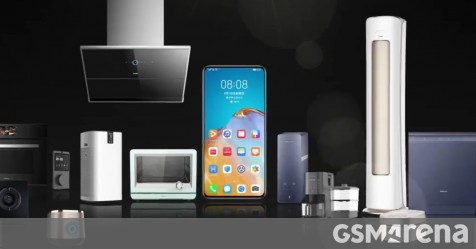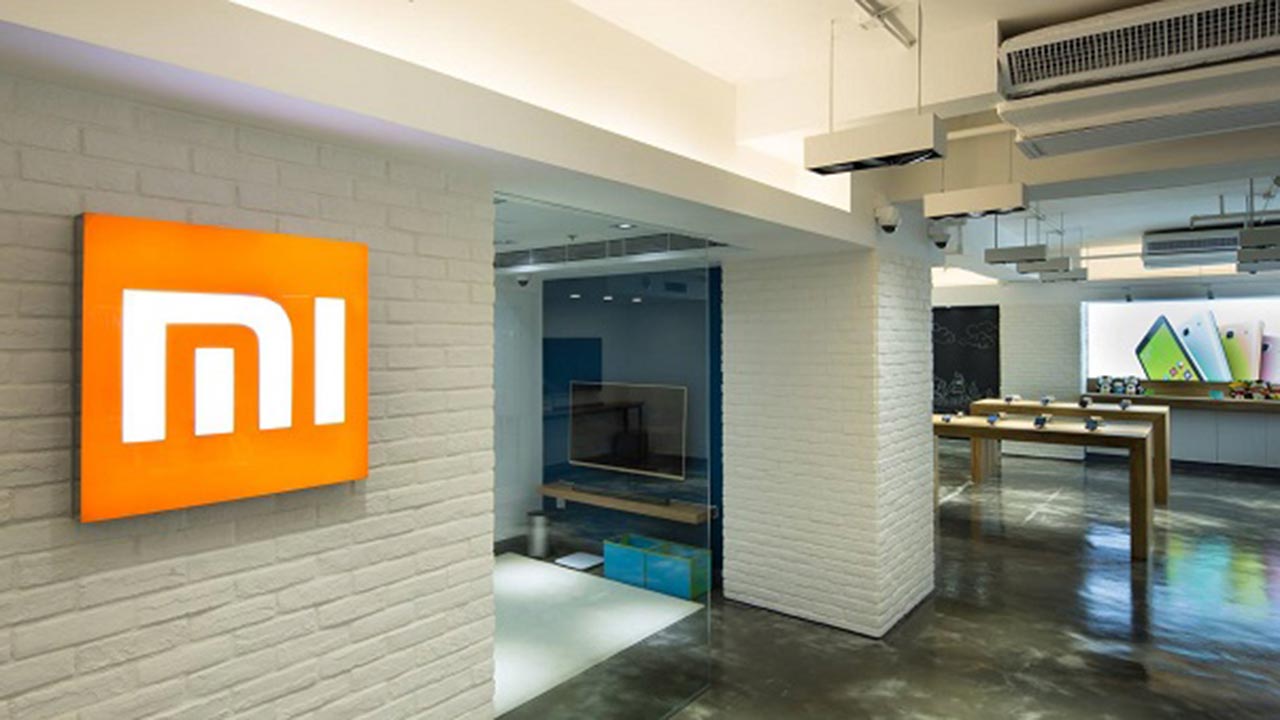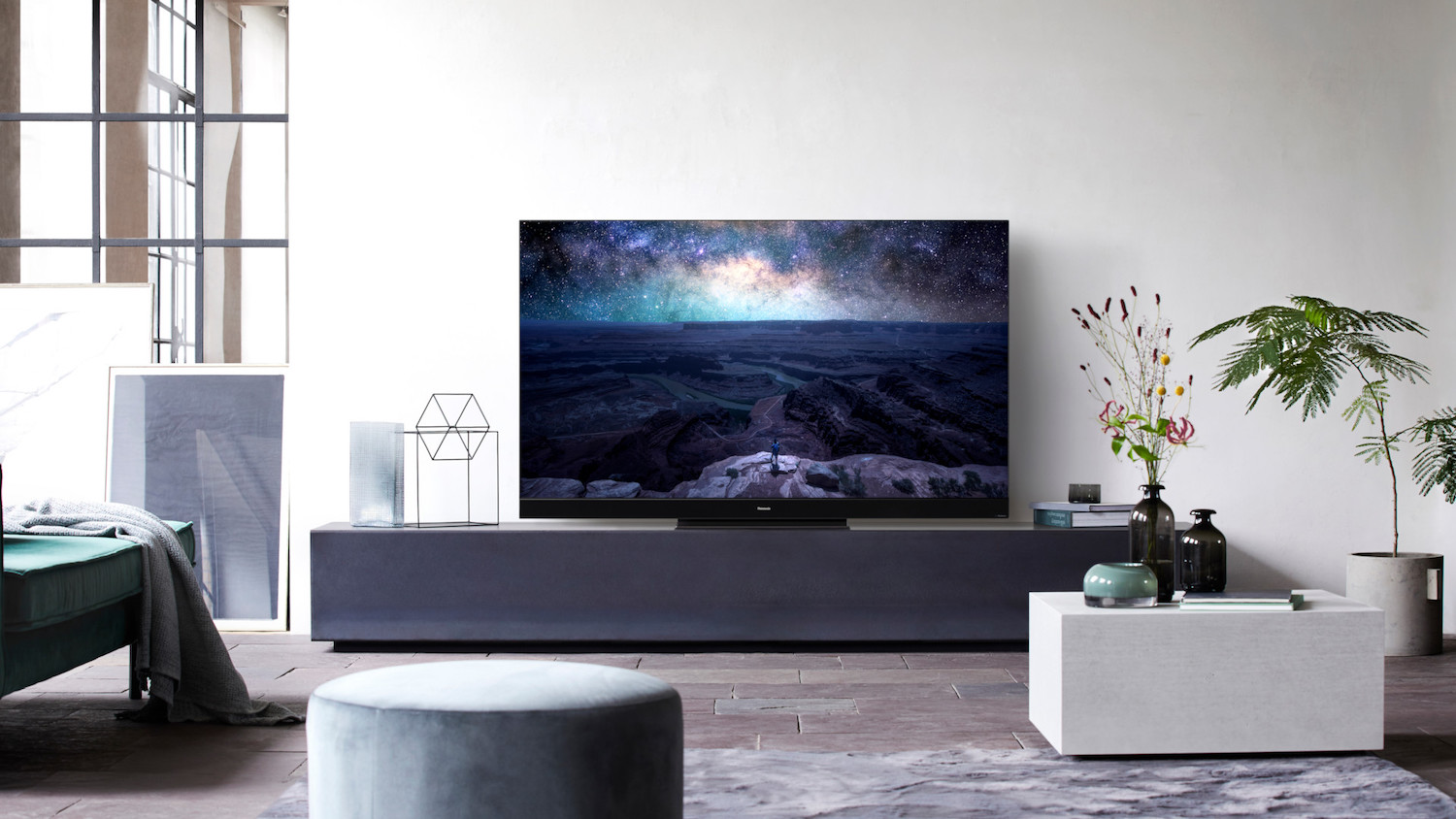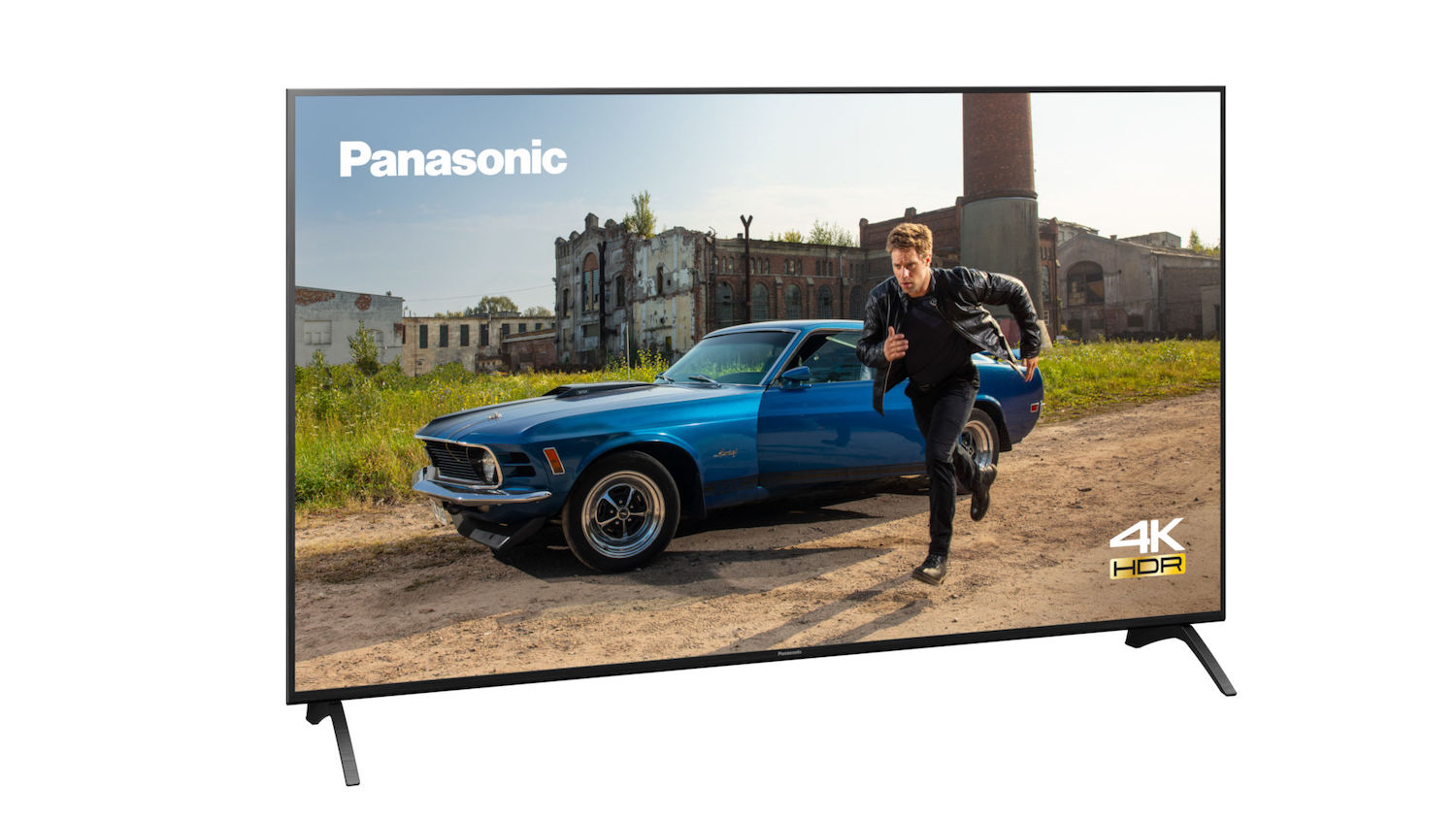Be at the top of the offer only OLED models with Panasonic. This HXW 944 leads the list of LCD models. It is a well-equipped TV that is in the upper middle class.
Multiple choice installation In its design, Panasonic predominantly uses Japanese influences, and the emphasis is often on simplicity and elegance. However, that does not mean that functionality is lost sight of.
The feet of the HX 940 can be mounted in two ways. In one position he stands very wide, with the feet at the end of the screen. In the other position, the feet are more inward, so you can also place it on a less wide piece of furniture.
The feet just click into the chassis, but although they are tight, there is still some slack so that it looks like it is not fixed. Don’t worry, the construction is stable.
The further finish is excellent. The narrow black brushed frame around the screen never gets in the way. And on the back, the back has the texture of a camera grip, a nice accent.
Connect! Panasonic will stick with HDMI 2.0 connections for now. HDMI 2.1 will search in vain, the only HDMI 2.1 feature that this device offers is ALLM (Auto Low Latency Mode) with which a game console can automatically switch the TV into game mode. ARC (Audio Return Channel) is of course also provided.
The device has four HDMI connections, all of which are ready for Ultra HD HDR in the best quality. There are also three USB connections (one USB 3.0) and a component video input with stereo cinch input for older, analog sources. An optical digital output is provided for sound bars or audio systems that do not work with HDMI-ARC. You can also use the headphone connection to connect a subwoofer.
There are three antenna connections , and the built-in dual DVB-T2 / C / S2 tuners have a double CI + slot. You can record live TV to an external USB hard drive while simultaneously watching a different channel.
Finally there is an ethernet connection, built-in WiFi and Bluetooth. Via Bluetooth you can connect a wireless headset, mouse / keyboard combination or gamepad or you can send the audio from your smartphone to the TV.
Some of the connections (including two HDMI and two USB) are at the back and point to the back, you have to take this into account when mounting on the wall.
Mount a small cable tray on the feet. This way you can neatly route both the power and signal cables.
My Home Screen 5.0 Panasonic uses a self-developed smart TV platform, My Home Screen, which is now up to version 5. This latest version has been somewhat simplified. All icons of connections, apps or TV channels appear in a bar at the bottom of the screen. When you select an icon, a second bar appears above that provides content recommendations. The app itself must support this, for example with Netflix and YouTube.
My Home Screen 5.0 is a handy, clear and very smooth interface. You can adjust the location of each icon so that it really becomes your Home screen. Everything runs very fast on both the Home screen and in the very spacious settings.
Classic Zapper If it works, you don’t have to change anything. The Panasonic remote has been unchanged for quite some time. It is a long, silver-colored zapper with large, handy keys. The â ???? My Appâ ???? You can assign the test yourself to a favorite app, so that you can start YouTube with a key, for example. Netflix already has its own key.
Another useful tip: the â ???? Pictureâ ???? button allows you to quickly select another image mode. Very useful if you use different modes for sports, film, during the day or in the evening. The list of image modes that appears can also be adjusted via the image menu.
Image quality This Panasonic uses an IPS panel. This type of panels has a good viewing angle, but moderate contrast. To boost the contrast, Panasonic uses the local dimming technique. The Edge Led backlight is divided into eight columns. The processor analyzes the image in real time and dims the backlight where necessary to create a better black. Combined with the smart control of the LCD panel, this provides a better contrast. Still, you shouldn’t hope for deep black, this TV is at its best in some ambient light and with bright content.
In dark scenes there is a limited risk that you will miss some shadow nuances. On the other hand, you rarely or never see the individual columns of the backlight. The â ???? True Cinemaâ ???? image mode is well calibrated, albeit quite dark. Unscrew the “backlight” setting. what up for a better result during the day, or switch to the â ???? Cinemaâ ???? image mode.
The HX 940 is equipped with the same processor as Panasonic’s OLED models, the HCX Pro. It delivers really excellent results. The noise reduction is very good, even for tricky compression noise (block formation). Even tricky color bands can hide the processor reasonably well without covering up too much detail. The upscaling is excellent, but the image looks relatively soft. To improve that, you can set the sharpness a little higher, up to a maximum of 55.
The only LCD model that has a 100 Hz panel, we also expect good motion sharpness. However, it has to give way to other top LCD models, but delivers fine results as long as you â ???? Intelligent Frame Creationâ ???? let alone at minimum. The â ???? Middleâ ???? mode was our preference, but some people find the smooth effect of Motion interpolation disturbing. It’s your choice.
Panasonic supports all major HDR formats: HDR 50, HLG, Dolby Vision and HDR 10 +. It is therefore completely unnecessary to stress whether your TV supports the correct format. The peak brightness (in the True Cinema image mode) is approximately 410 at both a 10% window as a completely white screen . The color range achieves 85% DCI-P3. This puts it just below the values we set for a clear result (500 nits, 90% DCI-P3). But here too the HCX Pro processor ensures excellent results, and both color range and brightness are used very well. Activate â ???? Dynamic HDR Effectâ ???? for the best result. Very clear mastered HDR 10 – content is possible despite everything seems a bit too pale. Just then you will notice the added value of HDR 50 + and especially Dolby Vision. These formats provide the TV with much more information so that the HDR impact is better preserved.
Sound Quality The HX 940 has to make do with a very ordinary 2x 10 W audio system, a configuration typically is for middle class. It supports Dolby Atmos, but you shouldn’t expect any miracles from that, a light surround feeling is the best the TV can create. Our usual Star Wars scene comes out quite well, but we notice two things. First, there is no specific ‘movie’. sound mode. We chose the â ???? Userâ ???? mode, and activated “Bass Boost” ???? and â ???? Cinema Surroundâ ????. Second, this TV cannot produce really thunderous bass. Fortunately, Panasonic has thought of that and you can connect a subwoofer. Dialogues are very clear, but in the rougher parts of the soundtrack you can hear that you should not turn the volume up excessively.
To investigate that better, we dive into our music, and yes, too. we quickly notice the same thing there. The Apollo bass drums 440 â ???? s Krupa are only audible when you keep the volume low enough. At higher volumes, the TV reduces the dynamic range of the basses very hard. The loud sounds of Metallica or Sisters of Mercy are clearly too ambitious for the audio system that intervenes regularly and therefore clearly changes the sound.
Panasonic offers you the possibility to connect your smartphone to the TV via Bluetooth to stream audio, but that will only be interesting if you want some background music. For a better experience, both for film and music, we still recommend an external audio solution.
Conclusion The Panasonic TX – 55 HXW 944 (NL) / TX – 55 HX 940 (BE) is a good choice if you are looking for a TV for the whole family. It has an excellent viewing angle and excellent color reproduction, and it shows its best side with clear, colorful viewing food. Dark films can be a challenge for the limited contrast, but the cleverly controlled local dimming partially compensates for that. The HCX Pro processor provides excellent upscaling and image processing. My Home Screen 5.0 delivers a modern, convenient and smooth smart TV environment.
Panasonic TX – 55 HXW 944 (NL) / TX – 55 HX 940 (BE) Â
â ?? ¬ 1. 199 | www.panasonic.com
Rating: 4/5














